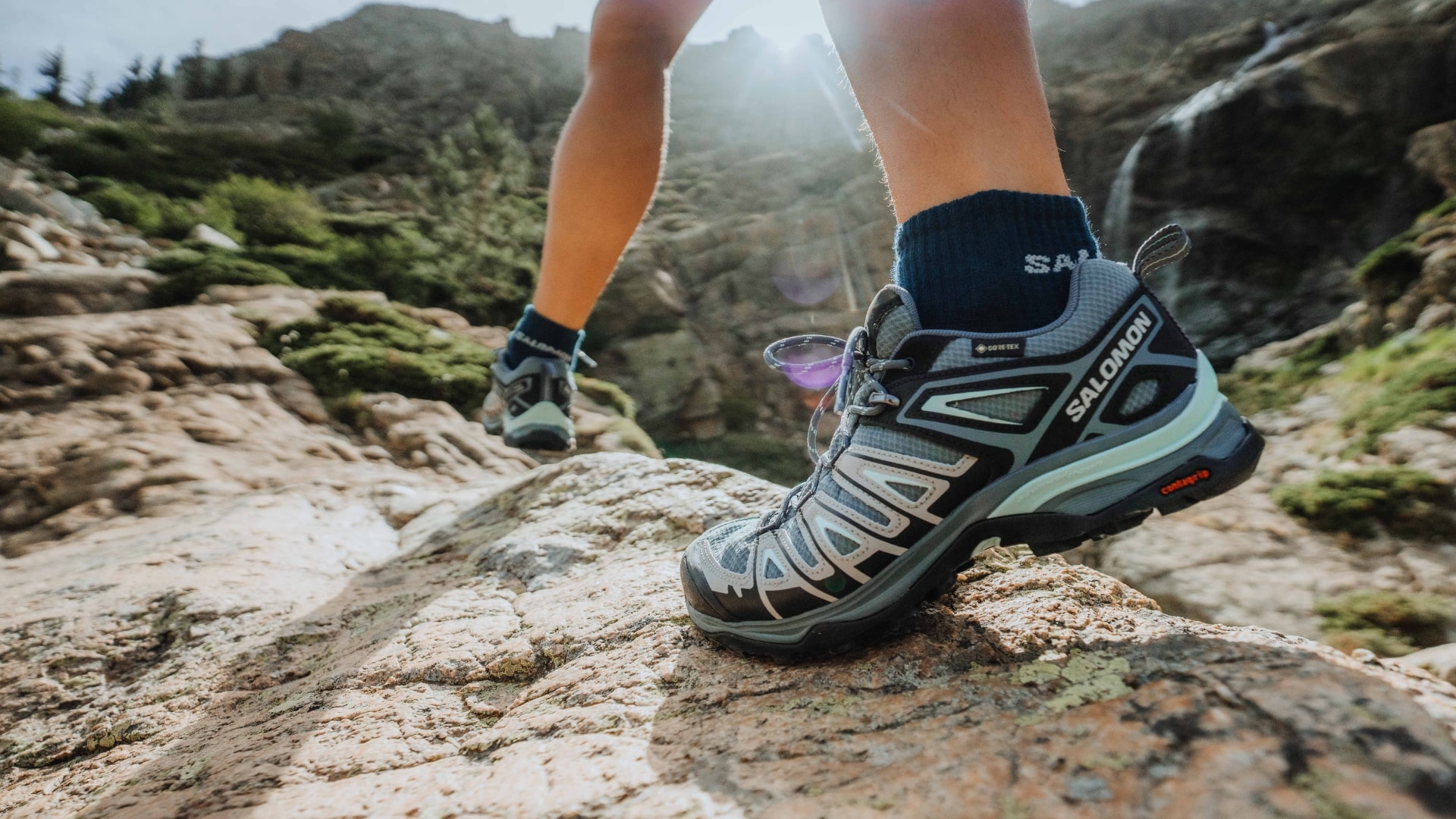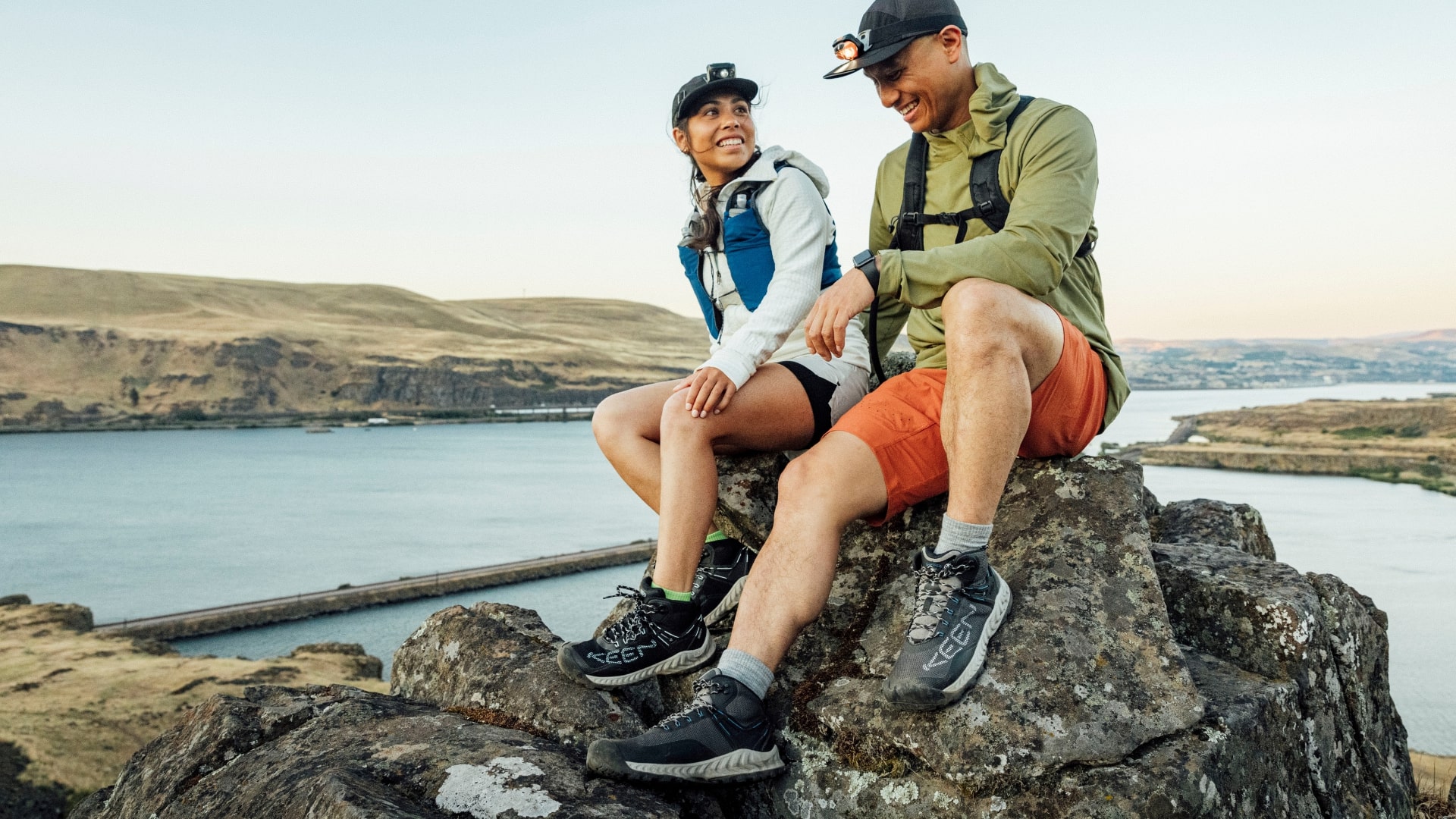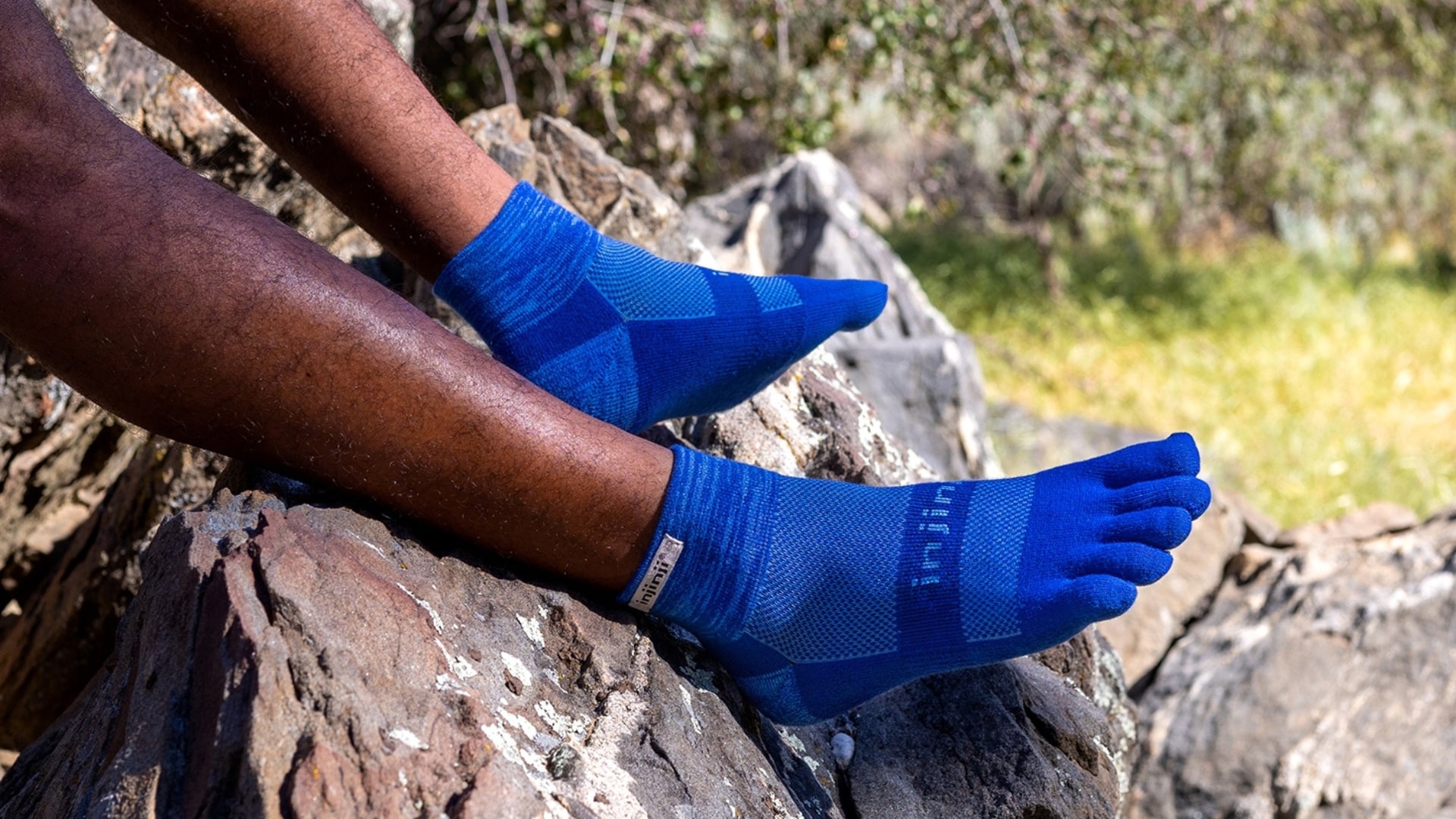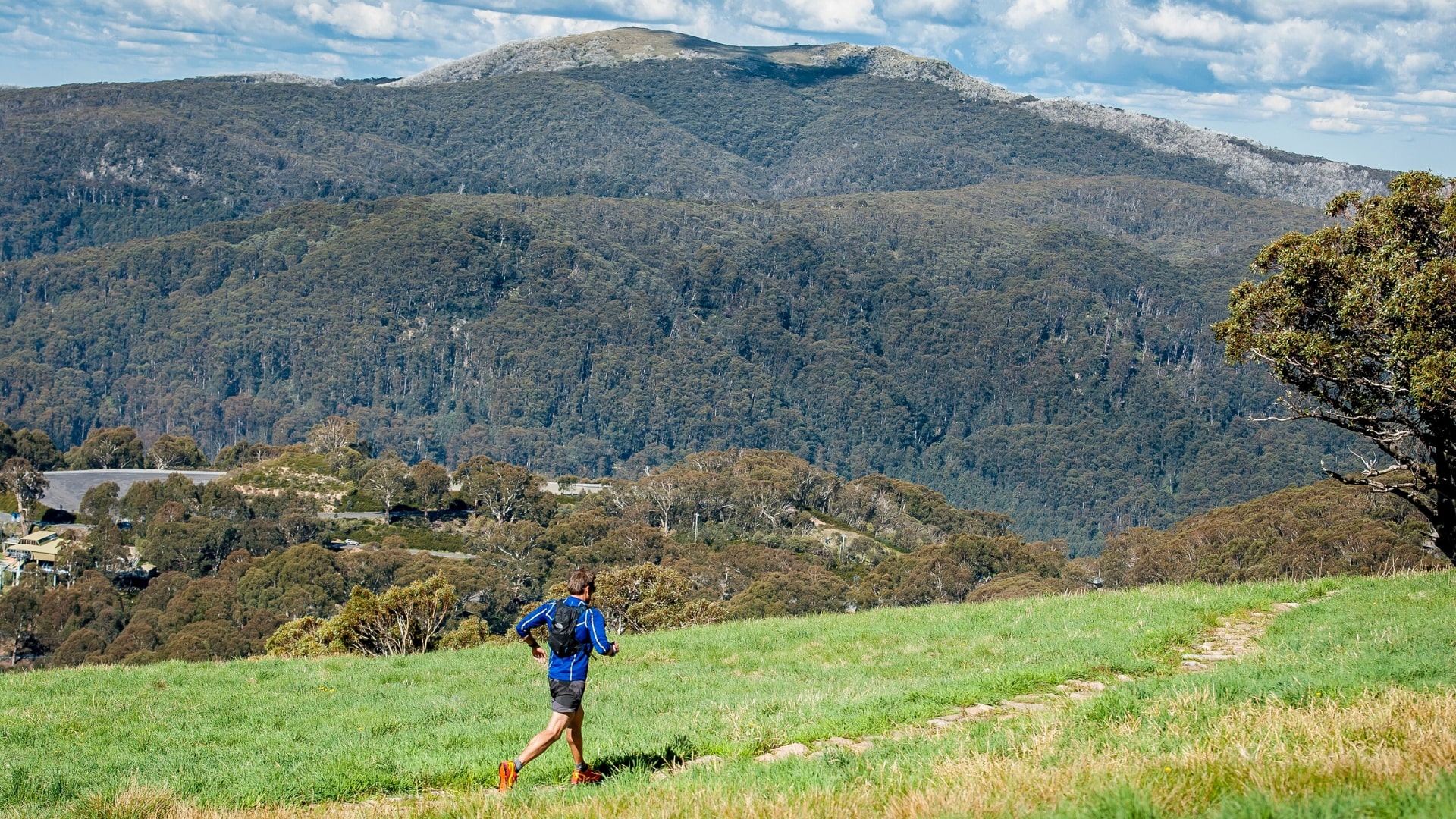| Your browser is not supported. | ||
|
Please browse our site using any of the following options:
| ||
How To Start Trail Running

When you can't decide between going for a hike or going for a run, trail running will tick all your boxes. As an exciting combination of hiking and running, trail running allows runners to connect with nature, offering a break from their urban environments. It provides a sense of adventure and exploration in scenic, natural settings. Trail running also offers diverse terrain, from forests and mountains to deserts and coastlines. This variety keeps the experience exciting and challenging.
Trail running provides the ideal opportunities to explore new places and conquer physical challenges, making it more than just a workout. If you are looking for a new and exciting way to work out, then trail running is for you. If you don't know where to start or are looking for some tips, our expert team at Anaconda has come up with this helpful guide to provide you with all the information you need to get started today!
Quick Links
- What Is Trail Running?
- What To Wear Trail Running
- What Essential Trail Running Gear Do You Need?
- Trail Running Tips
- Trail Running Gear List To Get You Started
What Is Trail Running?
Trail running is a form of running that takes place on natural terrain, typically on unpaved paths, trails and wilderness areas. It differs from road running, which occurs on paved surfaces. Trail runners embrace the challenges and rewards of running in scenic and often rugged environments. It can range from easy, well-maintained trails to technical and demanding routes, catering to various skill levels and preferences. Trail running often requires developing skills such as navigating steep descents, river crossings and uneven terrain, making it a mentally stimulating activity.
What To Wear Trail Running

When trail running, choosing the right clothing and gear is crucial for comfort, safety, and performance. Here's a detailed guide on what to wear and consider:
Trail Running Shoes
As you will be running, you will need to invest in a pair of trail-specific running shoes that feature good grip and stability. You will also need to make sure they fit well and are appropriate for the terrain you'll be running on, such as rocky, muddy or sandy trails. Another important factor to consider is breathability to ensure that your feet don't sweat during your run.
Moisture-Wicking Clothing
For trail running clothing, you will need to choose moisture-wicking materials like synthetic blends or merino wool that will wick sweat away from your body and prevent chafing while you are running. It is also important to dress in layers for easy adaptability to changing weather conditions. Wearing a moisture-wicking base layer will also regulate your body temperature and choose shorts or tights that provide freedom of movement and prevent chafing.
Outer Layer
Depending on the season you are trail running in, you should consider a lightweight and breathable jacket, puffer jacket or windbreaker to protect you against the elements such as wind and rain.
Socks
Invest in moisture-wicking, cushioned trail running socks to reduce blisters and discomfort. The right trail running socks are a key part of your gear to enhance comfort, protect your feet and prevent common issues like blisters during your runs on challenging terrain.
Headwear & Sunglasses
As it is Australia, you will need to wear a moisture-wicking hiking hat or a cap to shield your face from the harsh Aussie sun and to also keep sweat out of your eyes. You will also need to protect your eyes from UV rays and debris while on your run with trail-specific sunglasses.
What Essential Trail Running Gear Do You Need?

When trail running, having the right gear is essential for comfort, safety, and performance. The specific gear you need may vary depending on the trail's conditions, your preferences, and the season. It's essential to research the trail, check the weather and adjust your gear accordingly before heading out. Here's a list of essential trail running gear you should consider:
Sunscreen & Insect Protection
It is extremely crucial to always apply a sweat-resistant sunscreen to protect your skin from UV rays before heading out on your trail run. A buff or neck gaiter is also a great way of protecting your neck and face from the elements as well. And lastly, if running in areas with insects, remember to apply insect protection or wear long-sleeved clothing for increased comfort during your run.
Hydration
When going on a trail run, it's essential to stay hydrated, especially if the run is long or in hot conditions. Consider a hydration pack, belt or handheld water bottle to stay hydrated on longer runs. The amount of water you need depends on the trail's length and intensity, weather conditions and your personal hydration needs, and the general rule is to aim for 0.5 to 1 litres of water per hour. Proper hydration is crucial for your safety and performance during a trail run. Adjust your fluid intake based on your body's signals and the specific conditions of your run.
Day Pack
Bringing a day pack on a trail run can be beneficial for many different reasons depending on your needs. You can store basic safety essentials in your day pack, carry energy bars and snacks to ensure you have easy access to fuel during your run, personal items, extra clothing in case of unexpected weather changes or temperature drops and more. The type and size of the backpack you choose should match the specific needs of your trail run and the gear you want to carry. It's important to strike a balance between having the essentials and keeping the load light enough to not hinder your running performance.
Navigation
Navigation gear is crucial for trail running, especially when you're exploring unfamiliar or remote trails. This includes navigation equipment such as a map, GPS, a compass, a torch or headlamp (if trail running at night), your smartphone and more. The specific navigation gear you choose depends on the complexity of the trails you'll be running, the length of your run and your familiarity with the area. Always plan ahead, let someone know your route and be prepared to use your navigation gear effectively to ensure a safe and enjoyable trail run.
Trail Running Tips
If you are new to trail running, here's an in-depth explanation of some of the best trail running tips to enhance your experience and performance. By following these trail running tips, you'll not only enhance your performance but also ensure a safer and more enjoyable experience on the trails.
Trail Selection
Trail selection is a critical aspect of trail running and its importance cannot be overstated, which is why it's crucial to choose a trail that suits your experience level. Different trails offer varying levels of technical difficulty, terrain, and elevation changes. Selecting a trail that matches your skill and fitness level reduces the risk of accidents and injuries. Running on a trail that's too advanced for your abilities can lead to falls, sprains, or other mishaps. For beginners, opt for well-marked and less technical trails. As you gain experience, you can tackle more challenging terrain. Also remember to keep your eyes on the trail ahead to anticipate obstacles like rocks, roots and branches. Quick decision-making and nimble footwork are key.
Trail Running Technique
Embrace a mix of running and hiking to conquer steep or challenging sections and adapt your pace based on the terrain you are trail running in. Aim for a midfoot strike instead of striking with your heels because this promotes better traction and helps prevent slipping on loose or uneven terrain. Focus on controlled and rhythmic breathing such as inhaling deeply to provide your muscles with oxygen, then slowly exhaling fully to rid your body of carbon dioxide. Trust your body and instincts, and as you gain experience, you'll become more intuitive about the terrain and how to adjust your technique.
Uphill & Downhill Strategy
When ascending, take shorter strides, lean slightly forward and pump your arms. Maintain a steady and sustainable pace to conserve energy. Also try to maintain a consistent and sustainable pace. It's often more efficient to run at a controlled pace rather than sprinting up steep inclines. On extremely steep or long uphill sections, it's perfectly fine to switch to a brisk power hike. This conserves energy and can be more efficient than running.
When descending, lean back slightly, distribute your weight evenly and use controlled steps to prevent falls or injuries. Use your brakes when necessary. If the terrain becomes extremely steep or technical, slow down by taking shorter, controlled strides. Maintain a balance between speed and control. Downhill running is a skill that improves with practice. Incorporate downhill sections into your training regularly to become more proficient at handling descents.
Rest & Recovery
Allow sufficient time for your body to recover between trail runs, especially after long or intense outings. Overtraining can lead to injuries. After your run, stretch to maintain flexibility, hydrate to replace fluids lost and refuel with a balanced meal or snack. Consider a post-run massage to aid recovery. Pay close attention to your body during your runs. If you feel fatigued or experience pain, adjust your pace and consider taking a break.
Altitude Training
If running at high altitudes, acclimate gradually to avoid altitude sickness. Train at lower altitudes first to adapt your body. Gradually acclimatise to higher altitudes and don't rush into high-altitude training, especially if you're not accustomed to it. Try to spend a few days at a moderate altitude before going higher and always focus on your breathing. At higher altitudes, the air contains less oxygen, so you may need to breathe more deeply. Practice controlled and rhythmic breathing to optimise your oxygen intake.
Trail Running Gear List To Get You Started

Here's a trail running gear checklist to ensure you have everything you need for a safe and enjoyable trail run. Keep in mind that the specific gear you need may vary based on the trail's location, duration and weather conditions:
Footwear
Electronics/Navigation
- GPS
- Smartphone
- Heart rate monitor (optional)
- Compass (optional)
- Map (optional)
- Headlamp or torch (for nighttime trail running)
Cooler Weather Clothing
Warmer Weather Clothing
- T-shirt
- Running shorts
- Sports bra
Hydration/Nutrition
- Water bottle
- Hydration pack
- Energy snacks
- Dehydrated meal
First Aid/Sun Protection
- First aid kit (bandages, blister pads, ointment etc)
- Sunscreen
- Insect protection
- Sunglasses
- Hat
Get Into Trail Running At Anaconda Today!
If you are wanting to get into trail running and don't know where to start, Anaconda has all of your trail running gear needs covered. Before you head out though, make sure you check out our Adventure Centre for more helpful tips and exciting destinations that you can visit with your friends, family and loved ones. If you liked our article on how to start trail running, then you might also like some of our other articles for tips and fun destinations such as:
- How To Choose The Best Running Shoes
- The Ultimate Checklist For Hiking Essentials
- Running & Walking In The Cooler Months
- How To Clean Hiking Boots And Properly Care For Them
Find your local Anaconda store and check out our extensive footwear range for your next outdoor adventure.